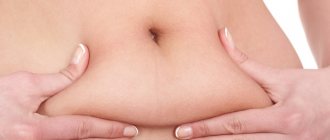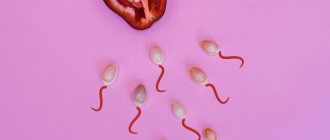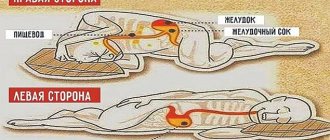Some young women of childbearing age cannot decide to have a child. Their fear is not based at all on the fact that they will have to bear responsibility for a new life. The biggest problem for them seems to be a change in their figure, not for the better. In fact, these problems are mostly groundless and far-fetched. If you follow your doctor's recommendations and lead a healthy lifestyle, including proper nutrition, walks in the fresh air and physical activity. We will try to cover the last point in today’s article.
Kegel exercises after childbirth, which are recommended for almost all women giving birth, will help restore your figure in the shortest possible time.
Before starting classes, you need to obtain permission from a gynecologist. If there are no contraindications, and the birth went well, without complications, you can start classes by the end of the month after giving birth. Do the first exercises for a short period of time, gradually increasing it and the load on all muscle groups.
Exercises are done an hour and a half after eating and, if you are breastfeeding, then after emptying your breasts, feed the baby. All physical exercises certainly have a positive effect on metabolism and muscle tone, allowing the body to recover faster.
There is a special set of exercises that any woman can do, regardless of whether the birth was natural or whether obstetric assistance was required. The only caveat is that if the woman in labor had stitches placed on the perineal area, she must wait until they heal and only then start exercising. Any painful sensations should be a reason to stop exercising and subsequently consult a doctor. These exercises are called Kegel exercises; their effect has long been proven by more than one generation of women.
The point of the exercises is to consistently compress and relax the muscles of the perineum.
First, try squeezing the muscles of the anus, holding them in this position for several seconds, and do several repetitions. Later you can increase the duration of the exercise.
Then we learn to squeeze the vaginal muscles. To understand which muscles need to be trained, try holding the stream for a while while urinating, then release it again. The muscles involved in this process are the vaginal muscles, which will be the focus of the training.
Exercising these pelvic floor muscles is beneficial in many ways. They are recommended for pregnant women to avoid unnecessary pain during childbirth. By learning to control your pelvic muscles, you will expand the range of pleasant sensations during sexual intercourse.
The pelvic floor muscles are used during pregnancy and childbirth, they are subject to great tension and are stretched and weakened during the postpartum period. This can provoke ailments such as urinary incontinence, uterine prolapse, etc. Kegel exercises after childbirth will help improve muscle tone. Start doing them, and the effect will not be long in coming.
Kegel exercises after childbirth:
- "Pauses"
. When urinating, hold and release the flow of urine five times. Once you learn to control these muscles, without the participation of other muscles, you will begin to succeed in the next exercise. - "Squeezing"
. Squeeze and relax your pelvic muscles. You can increase or decrease the frequency and strength of the compressions. - "Fixing"
. Squeeze the vaginal muscles and release after five seconds. Do this exercise for 10 times. Gradually increase the fixation time. - "Elevator"
. The most difficult of these exercises, but the effect is amazing. The vagina is a hollow tube of muscles consisting of several “floors”. Try to gradually tense and relax each “floor”, moving first up and then down. Perform the “fixation” exercise between the “lifts” up and down. - "Storm"
. Alternately contract the pelvic floor muscles from front to back, and vice versa.
The originality of Kegel exercises is that you can perform them anywhere and at a time convenient for you, absolutely unnoticed by others: while walking, standing in line, while driving a car, etc. Make these exercises a regular part of your daily exercises , and you will be pleasantly surprised by the results.
Finally, the long-awaited little one was born and the difficulties of pregnancy were a thing of the past. The days are filled with wonderful worries, and the female body begins the process of recovery after childbirth. In the whirlwind of everyday life, it is important to pay attention not only to the baby, but also to yourself. Daily exercise therapy (for example, Kegel exercises) will help preserve and enhance women's health.
Why do you need the Kegel technique?
There is a therapeutic complex of gymnastic exercises that can strengthen the muscles of the perineum and pelvic floor. The complex was developed by the famous gynecologist of the mid-twentieth century - Arnold Kegel. All exercises are performed very simply and do not take up much personal time, which is so necessary for a young mother.
As a rule, the daily load on the muscles of the vagina and pelvic floor is reduced to zero, but the influence of adverse factors still occurs on them.
Loss of firmness, elasticity and weakening of the pelvic muscles is an obvious consequence of minimal stress on them. Poor functioning of the pelvic muscles leads to various diseases, problems in sexual life and, as a result, emotional and psychological discomfort in a woman.
Indications for the use of Kegel exercises
Despite its simplicity, gymnastic exercises using the Kegel method are very unique and require a responsible and competent approach. Medical indications for performing a set of these exercises will be:
- pregnancy planning;
- preparation for childbirth;
- restoration of vaginal muscles after childbirth;
- prevention and treatment and feces;
- prevention and treatment of pelvic organ prolapse;
- prevention and treatment of hemorrhoids;
- prevention of inflammatory processes in the genital area;
- improving the elasticity of the pelvic muscles;
- increased sexual sensations and improved intimate life.
List of contraindications
Gymnastics, developed by Arnold Kegel, has a number of contraindications:
- acute inflammatory processes of the prostate and hemorrhoidal veins;
- varicose veins of the lower extremities and intimate area;
- oncological diseases of the genital organs, suspected cancer;
- acute infectious diseases;
- sexually transmitted diseases with acute symptoms.
Before performing the exercises listed below, you should consult your doctor and prepare thoroughly (for example, practice your breathing technique).
Kegel exercises before childbirth - benefits and feasibility
A set of Kegel exercises can be performed by expectant mothers at any time, provided they feel well enough and there are no contraindications. You just need to avoid lying on your back after the 16th week of pregnancy: this can cause rapid deterioration of the condition due to pressure on the inferior vena cava.
The closer the moment of birth, the more important the condition of the vaginal tissues becomes, because in an untrained woman the risk of ruptures increases markedly. However, if in the early stages the expectant mother did not devote any time to training, then she should not exercise at an accelerated pace, because during pregnancy a sharp increase in load is fraught with dangerous consequences.
But it is no less important to devote time to training in the prenatal period, because if, due to the weakened tone of the vaginal walls, ruptures occur during childbirth, it will be more difficult to correct the situation. Thus, the best option is to perform Kegel exercises both before and after childbirth.
The effectiveness of exercises during this period is as follows:
- The elasticity of the perineal muscles increases, which, in turn, reduces the risk of ruptures during childbirth.
- Blood circulation in the pelvic area is normalized, thereby eliminating the risk of hemorrhoids before or after childbirth.
- The degree of pain directly during childbirth is reduced, which is due to the training of the vaginal muscles.
- The risk of organ prolapse when carrying a child is reduced.
It is better to start gymnastics early or at least in the middle of pregnancy, since closer to childbirth the soft tissues of the vagina swell intensely, so performing exercises with help will cause difficulties.
Exercises for abdominal muscles
The abdominal muscles are the second weak point of a woman who has given birth to a child. To quickly lose weight and restore your abs, you can do the following exercises.
- Learn to breathe correctly. Pull your abdominal muscles inward, inhale slowly and direct all the resulting air into the chest. Hold your breath for 10 seconds.
- Get down on all fours and arch your back like a cat. After two rounds of diaphragmatic breathing, bend your lower back down while keeping your abdominal muscles inward.
- Stand on your forearms and toes, pulling your abdominal muscles inward. Hold the pose for 10 seconds.
- Lie on your side, bend your knees. Slowly pull your abdominal muscles inward. Stay in this state for a few seconds. Repeat the abdominal exercise 6 times.
- Lying on your back, pull in your abdominal muscles and fix them in this position for 5 seconds.
Helpful: What sedatives are suitable for infants?
These simple postpartum recovery exercises will help you not only lose weight, but also keep your body in good shape for many years.
Advice
Start exercising no earlier than 6 weeks after giving birth.
Fitball training is also recommended for weight loss after childbirth. Simple gymnastics on a ball is aimed at strengthening all the abdominal and abdominal muscles.
What can you do on a fitball?
- While sitting on a fitball, push off from it with your feet. Remember to breathe rhythmically and pull your abdominal muscles inward.
- Lie on your stomach on the ball and walk forward on your hands. Roll on the fitball so that the ball passes over your entire body - from your chest to your knees. Don't forget to contract your abdominal muscles.
- Kneel down with the ball under your chest. At the same time, extend and lift your arm and opposite leg. Keep your balance on the ball.
- Lie sideways on the ball with one hand on the floor. Fix your lower leg, slowly raise your upper leg and lower it just as slowly. Retract your abdominal muscles during the exercise.
What abdominal exercises will help you lose weight quickly? Young mothers ask this question almost in the delivery room.
The following selection of exercises is recommended for weight loss.
- Lying on your back, gradually lift your pelvis up, tightening your buttocks and drawing in your abdominal muscles. At the same time, raise your head and press your chin to your chest. Breathe evenly and deeply.
- Lying on the floor, describe large circles with your outstretched legs. Don't forget to tighten your abdominal muscles.
- Sitting on the edge of a chair, pull your stomach in, lift your legs, bend your knees, and lift them off the floor. At the same time, you should not bend in the lower back and relax your stomach. Hold your raised legs for 10 seconds.
Advice
For effective weight loss, combine exercise with proper nutrition.
Kegel exercises during pregnancy
The first exercise is best practiced on the toilet
Special exercises based on the methods of an American gynecologist are included in the curriculum of many schools for expectant mothers. The following complex is most effective:
First exercise
. Spread your legs slightly at the knees and spread them slightly while sitting on a chair. Then tense the muscles of the perineum for 5-10 seconds. To find the right muscles, you need to mentally imagine which muscles are tense when trying to stop urination. These are the corresponding muscles of the perineum. Then relax them as much as possible.
Second exercise
, called "Elevator". Mentally distribute the vagina into different “floors” and alternately strain the corresponding areas, starting from the bottom and moving upward. Upon reaching the upper “floor,” again strain the vaginal muscles alternately, moving downward. In total you need to do five approaches without breaks. On average, one should take 1 minute to complete.
Third exercise
called “Waves” consists of alternately tensing and relaxing the necessary muscles of the vagina and adjacent muscles of the anus. First of all, you should squeeze the vaginal muscles, then the anus, and then relax in the reverse order.
Fourth exercise
is aimed at training the muscles that will be involved during childbirth in the most active and painful process - pushing. It is necessary to try to push, as before defecation. In this case, the vaginal muscles should also be used. Afterwards, the muscles are relaxed and the movements are repeated again. Thanks to these exercises, the birth process will become less painful.
The above complex can be performed in the absence of contraindications and complications. At the very beginning of training (during the period of mastering the Kegel complex), each exercise should be performed 2-3 times, gradually increasing the number of repetitions to 10-15. You need to exercise several times a day and increase the number of workouts to 5 times a day. You can devote time to exercise both in the second and third trimester, and only two to three weeks before giving birth should you stop exercising. Of course, if complications are detected during pregnancy, they refuse to perform the complex or coordinate the exercises with a doctor.
Recovery
The duration of vaginal recovery depends on many factors:
- whether there were purulent discharges that provoked the formation of scar tissue on the walls;
- whether the expectant mother performed specially designed exercises to strengthen the muscular structures of the vagina;
- what condition the woman is in mentally and physically;
- fetal head size;
- quality of suture material;
- difficulty of childbirth.
If during the delivery process the obstetrician had to resort to sutures, especially in the perineal area, then the woman will experience discomfort for up to 12 weeks until the sutured nerve endings adapt.
The birth stretch of the vagina is restored within 2 months.
For a quick postpartum period, experts give several recommendations:
- At the first stage of rehabilitation, the traditional form of intimate communication must be changed. The release of secretions through an open cervix can pose a risk of infection.
- The perineum must be washed with running water and intimate hygiene products after each visit to the restroom.
- Change postpartum pads every 4-5 hours.
- Replenish your diet with foods that have laxative properties. It is better to exclude flour products. If difficulties with emptying do arise, wax and glycerin will help solve the problem.
- To ensure that the seams receive proper ventilation, underwear must be removed during the day.
- Areas of tissue scarring should be treated with an antiseptic at least twice a day.
- As soon as sexual intercourse resumes, it is advisable to use moisturizing lubricants for a while so as not to injure the walls of the vagina.
- During night sleep, it is necessary to free the body from the obligatory fabric elements that create favorable hygienic conditions (panties, bikini) and sleep on a sterile diaper.
- After 4 weeks of rehabilitation, a set of Kegel exercises is recommended, which will help strengthen the muscle layers of the vagina.
Kegel exercises are performed as follows:
- tense the vaginal muscles for 10-15 seconds;
- relax the genital organ for the same time.
- perform 3 passes for each manipulation.
The training is carried out daily. This will allow a woman’s body to return to normal, establish sexual relationships and fully experience the joy of motherhood.
If labor has led to the use of a surgical incision of the perineum, the woman is prohibited from:
- lift heavy objects;
- walk quickly;
- sit down on a hard surface.
Only after two weeks is it allowed to sit on the buttock located opposite the incision. For a sitting position, it is better to use an elastic circle, this will promote adequate scarring.
Watch the video about exercises for the vagina after childbirth.
When can you do Kegel exercises after childbirth?
After the complex and responsible process of labor, this complex acquires no less importance than, because it is necessary to restore the stretched muscles of the vagina.
- If the birth was without ruptures or serious injuries, the first movements using the Kegel technique can be performed within 2-3 days from the moment the baby is born. If you feel discomfort, it is better to postpone the start of classes.
- If there are stitches in the perineal area or other complications have occurred, training should be postponed for at least 10 days, and in some cases much longer. You can start with them only after consulting a gynecologist. Perhaps a specialist will advise doing exercises only after the uterus and other organs have completely recovered, and this may take 6-8 weeks from the date of birth.
Training intimate muscles after childbirth helps solve the following problems:
- Restores the tone of stretched muscles in the perineal area.
- Leads to rapid cleansing of the uterus from lochia (postpartum discharge).
- Reduces the risk of possible urinary incontinence.
- Reduces the risk of inflammation of the reproductive organs.
- Provides a quick return to sexual life.
Thus, exercise is very important to strengthen the pelvic floor muscles, which, in turn, avoids the occurrence of many gynecological problems.
They should be performed carefully in the postpartum period, especially until the bleeding stops. If any pain appears, you should immediately stop intense movements, and you can resume exercise only after a visit to the doctor.
The first exercise is “Pause”.
For several seconds (optimally 10–15), you should squeeze your muscles, as if you were trying to suddenly stop urinating. Then you can relax the previously tense muscles of the perineum and, after a short rest, begin the second approach. For the first time, you can try the exercise when visiting the toilet “in a small way”, sitting on the toilet, in order to more accurately feel the necessary muscles and understand how they should be tensed.
Second exercise - “Fixation”
. Squeeze the vaginal muscles tightly, hold in this state for 5 seconds, and then relax. Repeat the exercise several times. Such movements effectively improve the tone of the vaginal muscles. In the future, it will be possible to use special devices for training the vagina, which must be inserted inside, but this is appropriate only after all postpartum discharge has stopped.
The third exercise is “Elevator”.
It is done in the same way as the exercise of the same name for pregnant women, but it should be performed carefully in the postpartum period, gradually training the vaginal muscles. Movements of tension and subsequent complete relaxation of the vaginal muscles are first performed from the bottom up, and then back.
The fourth exercise is “Storm”
" The movements are similar to the previous workout – “Lift”, but in this case you need to alternately contract the pelvic floor muscles, moving in the direction from front to back.
Each of the exercises presented in the above complex is done 10 times, i.e. first 10 muscle compressions according to the “Pause” exercise, then 10 “Fixation” movements, etc. But it should be remembered that at the very beginning of training, the number of repetitions of each movement should be minimal - 2-3 times, subsequently the load should be gradually increased.
The complex itself, consisting of several exercises, is repeated 5–8 times a day. Only with such intensive training can the expected restoration of tissue elasticity and increased muscle tone be achieved.
It is advisable to do Kegels after childbirth for at least two months - until the normal state of the female genital organs is completely restored. However, you can exercise much longer in order to maintain the tone of the vaginal muscles at the proper level and achieve maximum satisfaction in intimate relationships.
You can do the above movements using the Kegel technique while in any position that is comfortable for a woman. The most comfortable position is a sitting position, but it is also recommended to do them in other positions (standing, on all fours, squatting, etc.).
Provided that such activities are constantly performed, the female body returns to normal faster. The need for intimacy arises faster than in women who do not devote any time to such physical activity. And the sensations themselves during sexual intercourse become more vivid, and this strengthens the relationship with your partner.
It’s not surprising, but Kegel exercises reduce the risk of postpartum depression. This is due to a decrease in pain in the uterine area, rapid normalization of hormonal levels, restoration of intimate relationships and improvement of their quality. Therefore, such exercises are effective for all young mothers, and you can start them as soon as your doctor allows.
Very often, women who have recently given birth face problems in their intimate lives. This happens after a natural birth, when the baby passes through the birth canal, thereby expanding it. The vagina after childbirth, of course, narrows, but not as much as before. On top of everything else, weakness of the pelvic floor muscles is added. The situation becomes even more complicated if the woman had ruptures during childbirth or had an episiotomy. In general, our article is about what Kegel exercises are.
There is an exit
To all the other “charms” of the postpartum period, intimate dissatisfaction is also added. The sensations during sexual intercourse become weaker, the man does not feel the elasticity that was before, during sexual intercourse air enters the vagina and comes out with unpleasant sounds. All this undoubtedly upsets partners. But there is a way out, and it is quite simple - these are Kegel exercises.
Thanks to these simple exercises, you will improve blood supply to the perineum and restore its former elasticity. In addition, Kegel exercises are an excellent prevention of venous stagnation of blood, prolapse of the vaginal walls, and inflammatory processes of the genital organs. If you devote some time every day to these simple exercises, your intimate life after childbirth will become brighter and more enjoyable. History of discovery
Arnold Kegel in the mid-20th century developed a set of special exercises for training the muscles of the perineum. The exercise complex was designed for the prevention and treatment of diseases of the genitourinary system such as urinary incontinence and prostatitis. These exercises are also recommended for hemorrhoids and to improve sexual functionality.
For a long time, there was no consensus among doctors regarding these exercises, but ongoing studies have confirmed their effectiveness. And now, many women after childbirth are advised by gynecologists to perform this complex to more quickly restore the tone of the vaginal muscles. How to do Kegel exercises
In order to know what needs to be trained, it needs to be discovered. Which is quite difficult to do with the pelvic floor muscles. It is still possible to do this with the pubococcygeus muscle, which is located between the pubic and coccygeal bones, although in life we practically do not feel it if it does not cause us concern.
In order to understand where it is located, you can do the following:
Insert your finger into your vagina and try to squeeze it. At the same time, the muscles of the thighs and abdomen should be relaxed. If you succeed, then you have found the right muscle. It is precisely the strength of its compression that you need to train.
When you go to the toilet in a small way, try to stop urinating by tensing your inner muscles, not your legs. If you succeeded, then you felt the desired muscle.
Don't worry if none of the methods can tell you the correct location of the pubococcygeus muscle. Just try again, or seek help from a specialist. How to do Kegel exercises
Conventionally, they can be divided into three types. Let's talk about them in more detail.
1. Tighten your muscles, as you did during urination, and slowly count to three. Let's relax. In the future, you need to increase the tension time to 20 seconds. You can also tense and relax your muscles, moving step by step: we strain lightly, then a little stronger, even stronger, we reach maximum tension and “go down” in the same way.
2. We make rhythmic contractions, i.e. We tense and relax our muscles as quickly as possible.
3. We push as during defecation or childbirth. Let's relax. It is important to feel the tension and relaxation of not only the muscles of the perineum, but also the anus.
Start with 10 exercises of each type, five approaches. Gradually increase them to 30 exercises five times a day. After you achieve perfection, i.e. You will easily feel the compression around the finger inserted into the vagina; 25 exercises a day will be enough for you, just to keep in shape.
Where and when?
The beauty of Kegel exercises is that you don't have to set aside any specific time to do them. And you don't need a gym. Whether doing household chores, relaxing or working, you can complete them at any time. Of course, at the initial stage you will need privacy and silence so that nothing distracts you from concentrating on your sensations. However, having mastered this simple science, you will be able to perform the entire complex completely unnoticed by others.
Positive sides.
An undoubted advantage of trained vaginal muscles is increased sensations during sexual intercourse and faster achievement of orgasm. And how nice it will be for your partner to feel the muscles squeezing his penis. Women after childbirth who perform this set of exercises note that the recovery process is faster and sexual life is much more enjoyable. Therefore, any woman who has recently become a mother can be recommended Kegel exercises, which will bring only positive emotions.
Vumbilding simulators
There are special devices for training the vaginal muscles. There are even courses where you learn various exercises with their help. But don't be upset if you don't have money for all this. They can be replaced with a regular stone egg. They are sold in almost all Feng Shui shops. Eggs come in different sizes. This is where you need to choose exactly the one that will fit the size of your vagina. If after childbirth it has increased significantly, then you should not choose a small egg made of natural stone. It is better to choose jade or quartz (light colors). The egg should be free of chips and cracks. By choosing an egg by size, it will be easier for you to perform exercises with it. This way the sensations will be more vivid. Then move on to the small one. Exercises with an egg
They do not replace the training exercises to strengthen the pubococcygeus muscle described above, but only complement them. This is like a more complex stage (wumbuilding at home) - a continuation of Kegel exercises.
The training egg needs to be prepared. There are two options:
Place an unused condom on the egg - drill a hole at the tip of the egg and insert a string there
All this is necessary in order to easily remove the egg from the vagina.
1. The egg is inside you (condom strap or string outside): start squeezing the egg with your vaginal muscles. Do you feel the compression? This means the egg size is chosen correctly. Do three compressions in a row, then take 15 seconds to rest. Then do the same again. Perform the exercise 10 to 20 times. First, start small, then, as you gain experience, increase to 20. The exercise is done lying down.
2. The egg is only half inside: try to make suction movements (as if sucking the egg inside yourself). The exercise is done lying down.
3. The egg is completely inside you: try to push the egg out (remember to rest after each attempt). The exercise is done lying down.
4. The egg is only half in you: try to hold the egg with your vaginal muscles while you are standing. With well-trained muscles this should work.
5. Work with a load (performed only if all other exercises are good). A plastic bottle of water is tied to a long cord sticking out of the egg. The amount of water depends on the training of the vaginal muscles. Try to hold such an egg with a load inside you while you are standing. As you gain skills, increase the weight of the load (pour more water).
Remember that the training egg must be clean. Before use, wash it well with soap and wipe it with alcohol to be sure. Do all exercises very carefully so as not to harm yourself and your body. Do not push the egg too far to avoid damaging the neck of the shirt. If you feel tired or uncomfortable, stop exercising, no matter what stage you are at.
The female body after childbirth definitely requires care. This is connected not only with the beauty of the female body, but, above all, with health. After all, many women have a problem when weakened muscles of the urethra cannot hold urine, and some urine can be released through the urethra, especially when a woman coughs or sneezes. Therefore, to restore muscles in such situations, Kegel exercises are very helpful for women after childbirth.
Kegel exercises are a set of exercises aimed at contracting and supporting the pelvic muscles. With their help, the pelvic floor muscles are trained, increasing the elasticity of the vaginal tissue and its sensitivity. Kegel exercises after childbirth eliminate prolapse of the pelvic organs, are successfully used to restore muscles and ligaments stretched after childbirth, increase sexual energy and. Exercises are very effective for women who want to enhance vaginal and clitoral orgasm, while also increasing the sexual sensations of their partner.
Does the vagina really stretch after childbirth?
Well, we must not forget about the main postpartum horror story - a stretched vagina, in which there is too much space and little pleasure. Indeed, the vagina expands to allow the baby to pass through. But this happens not only due to mechanical stretching - hormones help the tissues. After childbirth, their levels return to normal, and all organs gradually shrink and take on almost the same appearance as before pregnancy. The pelvic floor muscles may become somewhat weaker - and the gynecologist will be able to distinguish a woman who has given birth from a nulliparous woman. But without an examination in a gynecological chair, this is invisible and not so important. Yes, for some time vaginal sex may be unusual, not what you are used to, but later everything will return to normal; To speed up this process, you can always perform exercises to train the pelvic floor muscles, and then the usual sensations will return faster. In addition, do not forget that a woman’s main friend in matters of orgasm is the clitoris.
It is impossible to bear and give birth to a child without changes in the woman’s body and its individual organs.
The vagina, from which, in fact, the stage of conception and the subsequent birth of a baby begins, is no exception. It participates in many actions of the physiological process that completes pregnancy, so it inevitably transforms.
However, the special structure of the vagina does not allow it to change its shape; it undergoes changes of a different nature. A young parent feels undesirable changes in her general well-being and intimate life.
Rehabilitation is different for every woman. It is necessary to familiarize yourself with all the nuances so that the woman’s internal reproductive organ is restored as quickly as possible.
The content of the article:
Exercise 1
Step 1.
It is best to perform the exercises while lying down for maximum initial relaxation. For 10-15 seconds, unclench and contract the vaginal muscles as quickly as possible. Take a break of 10 seconds and do the exercise again. Do 3 sets and then rest for 1 minute.
Step 2.
Repeat this exercise only do it for 5 seconds with a 5 second break. Repeat the approach 9 times.
Step 3.
Squeeze the vagina as much as possible and hold it in this state for 30 seconds. Relax your vagina for 30 seconds. Repeat the approach 2 times, and then do Step 1 again.
Exercise 5
Step 1.
Tighten your vaginal muscles, pushing as if you are urinating. Slowly count to three and then relax. Do the exercise 5 times.
Step 2.
tense and relax your muscles. Do this as quickly as possible.
Step 3.
Try to push as if you were giving birth or having a bowel movement. Perform the exercise moderately, without fanaticism.
Every day, increase the number of squeezes, contractions and pushes. You can add 5 times to each exercise every other week, up to a maximum of 30. Ideally, you should perform 150 Kegel exercises postpartum daily. be healthy
Exercises for the muscles of the perineum
The muscles of the perineum determine the work of a number of muscles responsible for the functioning of the uterus, bladder, rectum, etc. Therefore, it is very important to restore it fully. To do this, you can prescribe the following exercise: the IP is taken while lying on the bed (you can sit in a chair). The muscles of the anus and vagina tense alternately. To make the task easier, you should relax as much as possible: relax your tongue, lips, palate, which will ensure soft breathing. Number of repetitions – 12-15 times.
To speed up a woman’s recovery after childbirth, there are various gymnastic complexes. It is best to choose exercises taking into account individual characteristics and the severity of childbirth, and for this, the exercise regimen should be agreed upon with a gynecologist.
Similar articles









